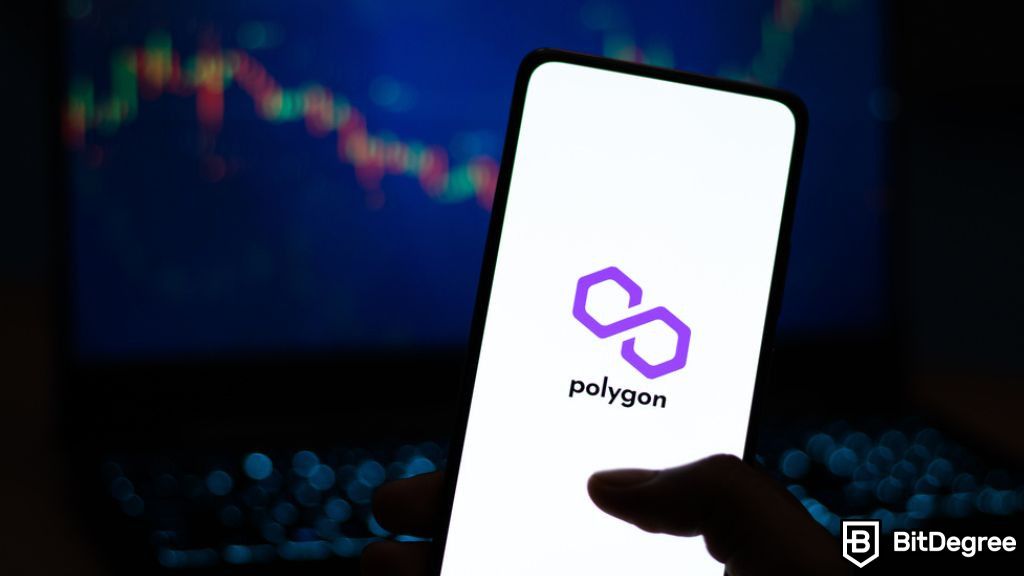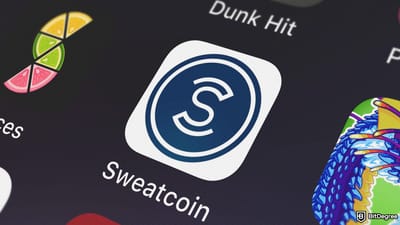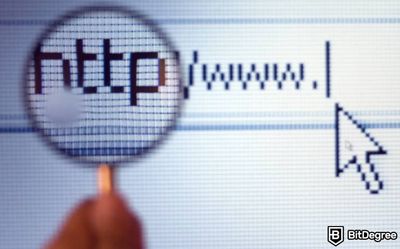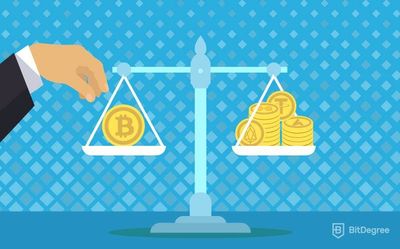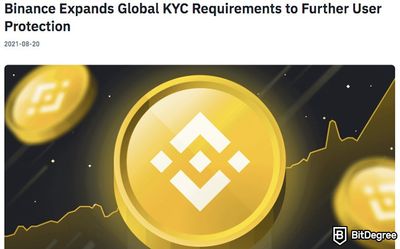Key Takeaways
- Polygon blockchain operates as a sidechain solution for the Ethereum network, offering faster transaction speeds, lower transaction fees, better scalability, and lower energy consumption;
- MATIC is Polygon's native token that is used for paying transaction fees, staking to secure the network, and participating in governance decisions. However, on September 4th, 2024, it will be upgraded to POL;
- There's a new version of the blockchain – Polygon 2.0. While it's still in development, it promises to improve the ecosystem with a focus on scalability and interoperability.
Stop overpaying - start transferring money with Ogvio. Sign up, invite friends & grab Rewards now! 🎁
Ever feel frustrated by slow transaction times and high fees on the Ethereum network? It can be like waiting in an endless line at the grocery store, only to find out your favorite crypto just mooned while you were stuck in place. Fear not, the Polygon blockchain exists as a savior.
This innovative blockchain network operates as a sidechain, offering faster transaction speeds and lower fees, all while remaining connected to the secure Ethereum mainnet.
Here's the more exciting part of Polygon: crypto enthusiasts can easily buy or sell MATIC, Polygon's native token, on popular exchanges like Binance, Kraken, or Bybit (and they will be able to do the same with the upgraded version, too). This seamless integration helps you jump into the Polygon ecosystem effortlessly!
That said, let’s dive deeper into this blockchain and see how it’s transforming the crypto world.

Did you know?
Subscribe - We publish new crypto explainer videos every week!
What Are Crypto Rollups? ZKSnarks vs Optimistic Rollups (ANIMATED)
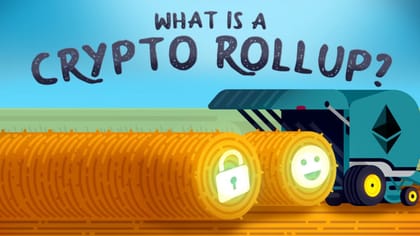

Table of Contents
What is Polygon Blockchain?
What is Polygon? Crypto beginners may get confused with the term initially, but Polygon blockchain is a Layer-2 scaling solution for Ethereum. It's a sidechain network that works alongside Ethereum, rather than as a direct competitor. Its purpose is to complement Ethereum's functionalities by processing transactions off-chain on the Polygon network for faster and cheaper transactions.
Latest Deal Active Right Now:In simpler terms, Polygon helps take the load off Ethereum by processing transactions elsewhere, making the entire system faster and cheaper to use.
Then, what does “Layer-2” mean? In the context of blockchain technology, a Layer-2 solution refers to a protocol or technology built on top of an existing blockchain (often called Layer-1). The main purpose of Layer-2 solutions is to address the scalability limitations of the Layer-1 blockchain, specifically aiming to increase transaction speed and reduce fees.
Here's how a Layer-2 solution works:
- Main blockchain (Layer-1). Imagine a busy highway with a limited number of lanes. This represents the main blockchain, like Ethereum, that offers high security but can get congested with a high volume of transactions, leading to slow processing and expensive fees.
- Layer-2 solution. Think of Layer-2 solutions as additional lanes built alongside the main highway. Polygon, in this case, is a specific Layer-2 solution for Ethereum. These additional lanes process transactions off-chain, meaning they don't directly occur on the main blockchain. This offloads some of the workload, allowing for faster and cheaper transactions.
While processing transactions off-chain, Layer-2 solutions like Polygon still rely on the security of the underlying blockchain (Ethereum). Periodically, they bundle these off-chain transactions and submit them back to the main blockchain for final settlement and security purposes. This ensures the overall security of the system.
So, layer-2 solutions essentially act as an extension of the main blockchain, providing faster and cheaper transactions without compromising security.
Polygon has a native one associated with it named MATIC. What is the MATIC token? It’s the fuel of the Polygon network used for some key functions.
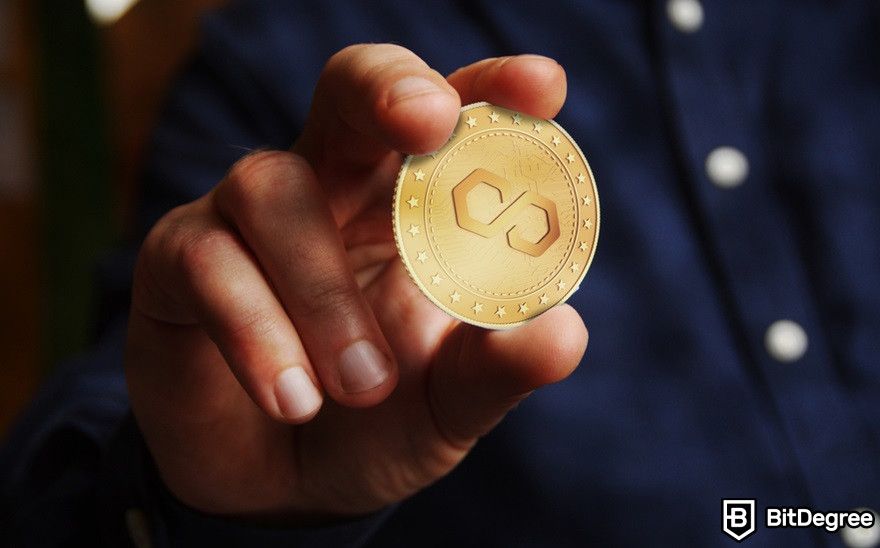
One of the primary purposes is to empower users to pay transaction fees, similar to gas on Ethereum. It allows users to interact with apps built on Polygon without the high fees typically associated with Ethereum transactions.
Users can also stake Polygon MATIC to contribute to the security and validation of transactions on the network. In return for their efforts, stakers earn rewards in the form of additional MATIC tokens.
Moreover, holding MATIC grants voting rights within the Polygon network. These votes allow MATIC holders to participate in shaping the future of the network by approving or rejecting proposals for upgrades and changes.
In essence, Polygon MATIC keeps things running smoothly by incentivizing participation and securing the network, while providing a way for users to interact with decentralized applications (dApps) built on Polygon.
MATIC is also available on many popular cryptocurrency exchanges, like Binance and Coinbase, so there's no barrier to entry for you to start exploring DeFi and non-fungible token (NFT) projects on the Polygon network.
However, note that on September 4th, 2024, MATIC will be upgraded to POL. Speaking of which...
Polygon 2.0
In 2023, Polygon introduced an upgraded version of its protocol architecture called Polygon 2.0, whose new whitepaper proposes changes in all parts. It aims to merge the existing infrastructure with zero-knowledge (ZK) technology to make Value Layer, where the network works more seamlessly and the Ethereum expands to an internet scale.
Key improvements of this new version include decentralized governance, a redesigned token system, a multi-chain architecture, and advanced ZK capabilities. These will help Polygon support multiple interconnected blockchains, providing users with a unified experience that feels like they only use a single chain.
With the launch of Polygon 2.0, MATIC will be upgraded to POL. POL will be a next-generation hyperproductive token. Initially, it will replace MATIC as the native gas and staking token. Via a native re-staking protocol, it will power the whole ecosystem of ZK chains.
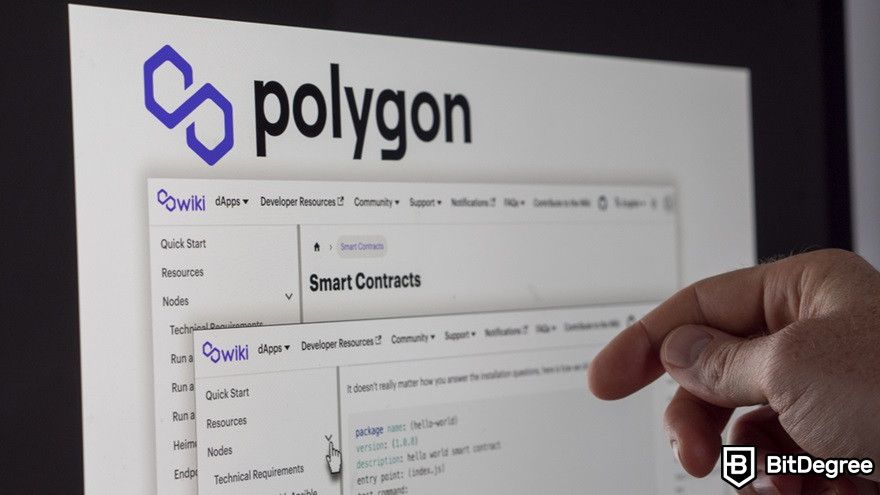
POL holders will be able to validate multiple chains and perform several roles on each of those chains. Later, it's planned that POL will have even more use cases in the Polygon staking hub, which is planned to be released in 2025.
As of writing, the MATIC to POL migration is planned to officially launch on the mainnet on September 4th, 2024. After this, all transactions that take place on Polygon PoS will use POL as the native gas token.
What is the Polygon (MATIC) token future after this?
Following the upgrade to POL, holders of MATIC on Polygon PoS won't need to take any action, as the token will automatically transition to POL.
However, MATIC holders on Ethereum, Polygon zkEVM, or centralized exchanges might need to use a migration contract to upgrade their tokens to POL. This process can be done permissionlessly on Ethereum.
How Does Polygon Work?
The new Polygon blockchain's whitepaper proposes a more modular and scalable architecture.
A modular blockchain is like building a car with specialized parts. Instead of having one giant engine that does everything, you have a separate engine, transmission, brakes, and steering wheel. Each part is optimized for its specific job, making the car more efficient, reliable, and customizable.
In blockchain terms, a modular architecture breaks down the complex functions of a blockchain into smaller, independent components. To illustrate this concept in the context of Polygon 2.0, there will be four layers in the network:
- Staking Layer. This layer ensures network security through a decentralized validator system capable of operating across multiple Polygon chains.
- Interop Layer. It enables seamless communication and asset transfer between different Polygon chains, providing a unified user experience.
- Execution Layer. This processes transactions in batches on supported chains.
- Proving Layer. It verifies the accuracy of transactions using advanced cryptographic techniques.
Together, these layers form the foundation of Polygon 2.0, building the Value Layer.
As you can see, Polygon 2.0 is a significant advancement. However, it doesn't mean the end of Polygon PoS, the first version of the Polygon blockchain, especially when this existing version remains popular among developers and users.

That said, how does Polygon work in the first version that makes many developers and users love it? At its core, Polygon PoS offers a suite of solutions to tackle Ethereum’s congestion and high fees.
Plasma chains, for example, process transactions off the Ethereum mainnet before submitting them in batches, while Proof-of-Stake chains operate alongside Ethereum, using validators for quick and secure transaction confirmations. Then, there are optimistic and zk-Rollups that bundle multiple transactions into one, significantly reducing Ethereum's load and associated costs.
These technologies enable Polygon to handle thousands of transactions per second (TPS), significantly improving Ethereum’s current capacity. This scalability allows decentralized projects to run more smoothly and cost-effectively, encouraging broader adoption.
To carry out its functions, the Polygon blockchain divides its work process into four stages (layers), namely:
- The Ethereum layer
- The Polygon network layer
- The execution layer
- The security layer
The Ethereum layer isn't technically a layer within Polygon itself, but rather the foundation upon which Polygon builds.
On this layer, Polygon showcases a collection of smart contract designs that are "deployed" on the Ethereum network. These smart contracts are the driving force behind activities such as transaction finalization, two-way communication between Ethereum and Polygon, and staking.

Next, Polygon processes the data from Ethereum to two further crucial stages: the Polygon network layer and the execution layer.
The Polygon network layer represents the core infrastructure. It's a collection of independent blockchains, each with its own set of validators and consensus mechanisms. These blockchains handle the actual transactions submitted by users on Polygon-based applications. Imagine them as the efficient processing centers handling the day-to-day transactions.
Then, the execution layer resides within each individual blockchain of the Polygon network layer. It's responsible for interpreting and executing the smart contracts associated with the transactions submitted on the Polygon network using the Ethereum Virtual Machine (EVM). Think of it as the engine that carries out the instructions within each transaction.
Polygon chains, each equipped with its own active EVM, unlock a world of faster and more cost-effective smart contract execution. This approach surpasses the limitations of the Ethereum network, offering developers and users a powerful technology for building and interacting with decentralized applications.
So, when someone interacts with a Polygon-based application, like a decentralized finance (DeFi) platform or an NFT marketplace, and initiates a transaction (like swapping tokens or purchasing an NFT), the transaction details are not directly sent to the Ethereum mainnet. Instead, those are processed on a Polygon sidechain first.
Then, validators on the chosen Polygon sidechain verify the transaction and ensure it complies with the network rules. Multiple transactions are bundled together on the Polygon sidechain. Periodically, these bundles are submitted to the Ethereum mainnet for final settlement, making use of the security of the Layer 1 blockchain while keeping Polygon transactions fast.

Lastly, the security layer offers an additional security option for Polygon networks. It's essentially a "validator-as-a-service" where users can pay fees to have a set of validators on the Ethereum blockchain periodically check the validity of transactions on a Polygon chain.
The security layer acts as an extra layer for developers who may not fully trust the validators on a specific Polygon network. Imagine it as an optional security guard service you can hire for additional peace of mind.
After that, a smart contract on the Ethereum mainnet verifies the validity of the bundled transactions from the Polygon sidechain. This verification ensures the transactions haven't been tampered with and are legitimate.
Once verified, the Ethereum mainnet finalizes the transactions and updates the overall blockchain state.
After successful verification and finalization on Ethereum, the outcome is communicated back to the Polygon chains and relayed to the user application. The user receives confirmation of the transaction on the Polygon-based application they use.
A Brief History of Polygon
Polygon blockchain, formerly known as Matic Network, has rapidly evolved from its first development to become a leading Layer-2 scaling solution for Ethereum.
What was the Matic Network’s goal? Founded in 2017 by Jaynti Kanani, Sandeep Nailwal, and Anurag Arjun, Polygon started with the vision of addressing Ethereum’s scalability issues.
The team published the Matic Network whitepaper, outlining plans for a Layer-2 scaling solution using the Plasma framework to improve transaction speeds and reduce costs. It then got seed funding from notable investors, including Coinbase Ventures and Binance Labs, to support development and infrastructure.
In June 2020, Matic Network officially launched its mainnet, transitioning from the testnet phase to a live, operational blockchain network. It attracted attention from developers seeking scalable solutions for decentralized applications, particularly in the areas of gaming, DeFi, and NFTs.

Due to its popularity, the Polygon blockchain formed various partnerships with projects and platforms within the Ethereum ecosystem, expanding its reach and adoption.
One of the key partnerships was with Aave. This DeFi protocol is integrated with Matic Network to make use of its scalability solutions.
Opensea, one of the largest NFT marketplaces, also used Matic Network to offer users a more efficient and cost-effective environment for buying, selling, and trading NFTs.
In February 2021, Matic Network rebranded to Polygon Labs with its Polygon blockchain to emphasize its broader mission of becoming a multi-chain scaling solution for Ethereum. It Introduced the Polygon SDK (Software Development Kit), enabling developers to easily deploy their own Ethereum-compatible blockchain networks.
In 2022, the Polygon blockchain became a preferred choice for many DeFi protocols and NFT platforms due to its low transaction costs and high throughput capabilities. To keep up with the growing demand, the network expanded offerings with Optimistic Rollups and zk-Rollups to further improve scalability and interoperability with Ethereum and other blockchains.
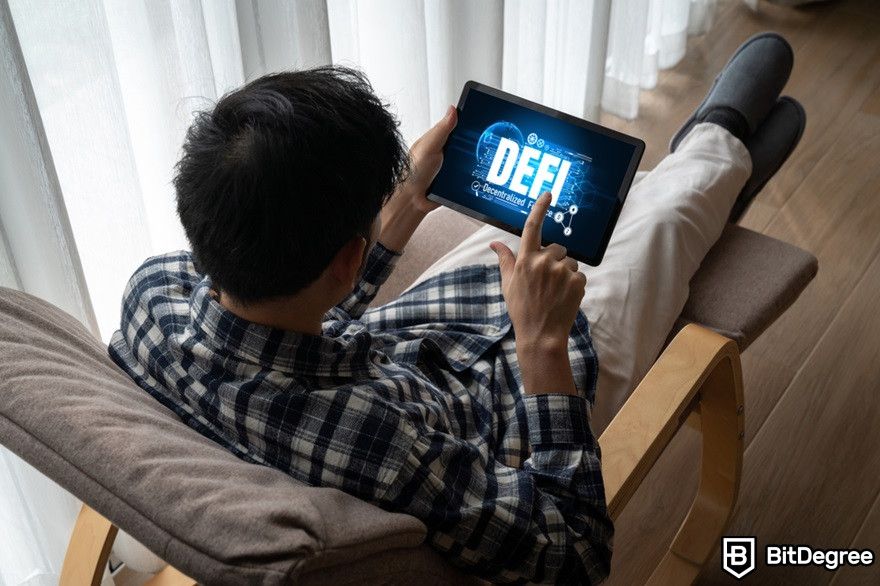
After that, in October 2023, Polygon Labs launched Polygon 2.0. It aims to unify the ecosystem because there are multiple public chains that fragment user experience. Those include Polygon PoS, Polygon zkEVM, and the Polygon Supernet app-specific chains.
How does Polygon work in this newer version? The plan is to create a modular network consisting of interconnected chains, each optimized for specific tasks while ensuring seamless communication and asset transfer between them.
This upgrade will take gradually because there are multiple phases and components involved. From November 2023 to January 2024, the focus was on testing and deploying the zkEVM Validium chain. After that, Polygon Labs plans to build a four-layer architecture: Staking, Interop, Execution, and Proving. Also, the MATIC token will be upgraded to POL to support this new structure and enable broader validator participation.
Once those are done, Polygon 2.0 will implement a three-pillar governance system to ensure community control: Protocol, Smart Contract, and Treasury. This decentralized approach will streamline decision-making and scalability.
Benefits of Using Polygon
The Polygon blockchain offers several key benefits that make it an attractive option for developers and users in the ecosystem.
One of the most significant advantages is its faster transaction speeds compared to the Ethereum mainnet. This speed is crucial for applications that require real-time interactions, such as gaming, DeFi, and NFTs, resulting in a smoother and more responsive user experience that helps expand adoption and increase satisfaction.
The faster approach can be achieved by processing transactions off-chain on Polygon's sidechains, reducing the load on the Ethereum network.
Polygon's sidechain architecture allows it to handle a high volume of transactions without experiencing congestion issues that can plague the Ethereum mainnet. This scalability makes Polygon suitable for applications needing high transaction throughput.

Additionally, using the Polygon blockchain typically incurs lower fees compared to Ethereum. This is because transactions are bundled together before being submitted to the Ethereum mainnet, minimizing gas fees associated with each individual transaction.
The reduction in gas fees makes it more economical for users and developers to interact with the blockchain. Developers will be able to deploy and operate dApps on Polygon at a fraction of the cost, making blockchain technology more accessible and encouraging innovation.
One of the Indonesian small and medium-sized companies used the Polygon blockchain for its coffee bean supply chain[1] for export purposes and aimed to make the process more scalable and sustainable. At the time of testing, Polygon transaction fees were remarkably low, typically ranging from just $0.0005 to $0.2, even with network fluctuations.
While the exact cost can vary, even with ten processes running concurrently, the maximum fee stays below $2. This makes Polygon one of the most budget-friendly options compared to other blockchain networks. In the case of Bitcoin, for example, the transaction fee is about 10-15 Satoshis or 0.0001 BTC or around $6 per transaction.

Besides cost efficiency, Polygon aims to be interoperable with other blockchains, including Ethereum, allowing for smooth communication and asset transfer between different blockchain ecosystems.
It provides a familiar environment for developers already comfortable with Ethereum. Its use of the EVM allows developers to easily deploy existing Ethereum smart contracts to Polygon with minimal modifications.
This interoperability can also unlock new possibilities for decentralized applications, including a wide range of DeFi applications, NFT marketplaces, and play-to-earn games.
For example, Decentraland uses the Polygon blockchain as a sidechain to address the native problems of the main Ethereum blockchain[2], namely high transaction fees and slow confirmation times. It’s noted that the sidechain is kept interoperable with Ethereum's mainchain.
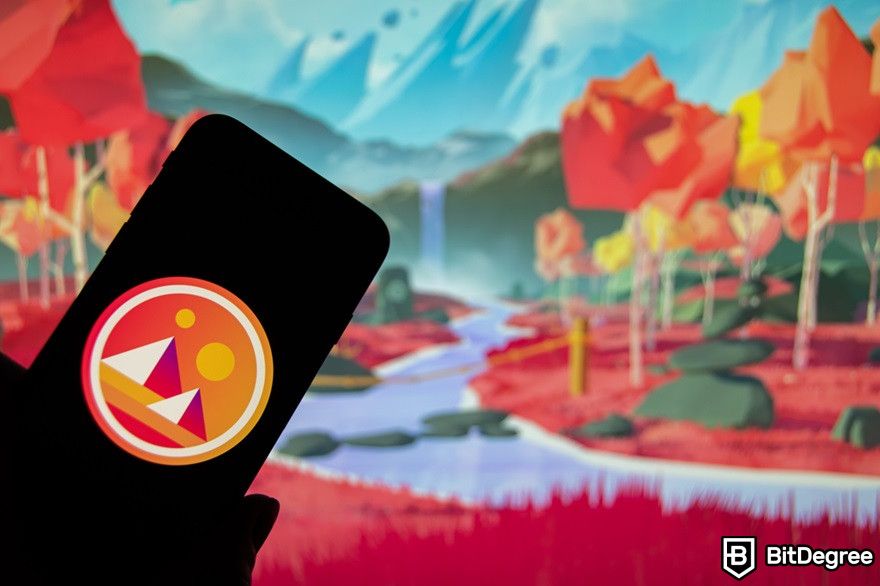
Compared to Proof-of-Work blockchains like Bitcoin, Polygon uses mechanisms that are more energy-efficient on its sidechains – Proof-of-Stake and similar mechanisms.
With Proof-of-Stake, validators stake their own cryptocurrency to participate in the network. Instead of competing with raw computing power, validators are chosen based on the amount they've staked. This significantly reduces the overall energy consumption compared to PoW, which can be an important factor for environmentally conscious users and developers.
The Polygon blockchain also implements a unique "green gas fee" model. A portion of the transaction fees collected are used to offset carbon emissions through various sustainability initiatives. While the exact process can be technical, the idea is to make Polygon's operations carbon-neutral.
The Polygon Blockchain: Use Cases
Polygon's functionality as a scalable and secure layer-2 solution for Ethereum makes it suitable for many decentralized applications:
- DeFi
- NFTs
- Gaming
The blockchain’s low fees and fast transaction speeds make it ideal for DeFi apps' protocols offering yield farming and staking opportunities. Users can benefit from attractive returns without the high gas fees often associated with Ethereum-based DeFi applications.
QuickSwap is one of the leading decentralized exchanges (DEXs) built specifically for the Polygon network. DEX is a DeFi platform allowing peer-to-peer cryptocurrency trading without a central authority.
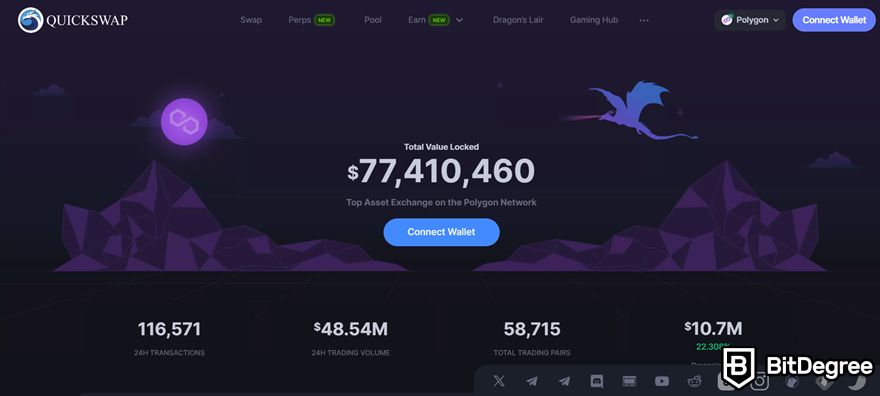
It uses an Automated Market Maker (AMM) model, meaning users can swap tokens directly from liquidity pools created by other users, without the need for a traditional order book. The platform also supports a wide range of ERC-20 tokens, allowing for diverse trading opportunities.
Additionally, users can contribute to liquidity pools and earn passive income in the form of trading fees, or participate in yield farming by staking the QuickSwap governance token (QUICK) to earn rewards from various liquidity pools.
So, what's the Polygon blockchain's role in this platform? Well, with Polygon, crypto enthusiasts can use QuickSwap to swap cryptocurrencies affordably, thanks to its lower fees. Its sidechain architecture also enables QuickSwap to offer much faster transaction speeds than Ethereum-based DEXes. This benefit translates to quicker trade confirmations and a smoother user experience.
DeFi lending and borrowing platforms can also use Polygon to give users access to loans and other financial services with greater efficiency and affordability than traditional financial systems. Moreover, the blockchain’s scalability enables developers to build complex DeFi applications on its platform.
Aave is another prominent DeFi project that uses Polygon. Crypto users can lend, borrow, and earn interest on various digital assets. Moreover, this platform is known for its speed, affordability, and user-friendly interface.
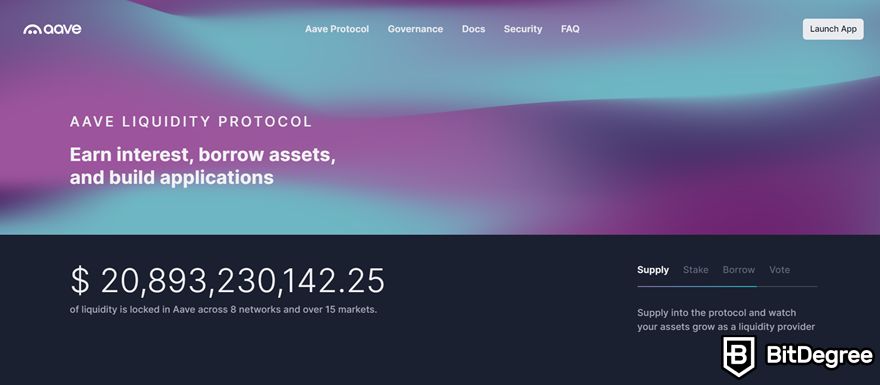
A core feature of Aave on Polygon is lending and borrowing, enabling users to deposit and withdraw a variety of cryptocurrencies. Lenders earn interest rates that fluctuate based on supply and demand within each lending pool. As borrowing demand for an asset rises, so too do interest rates for lenders.
Another standout feature is Flash Loans, which empower developers to borrow substantial amounts of cryptocurrency for a single transaction block without needing upfront collateral. This innovation is invaluable for complex arbitrage opportunities and self-liquidating strategies. Additionally, the platform offers aToken, an interest-bearing token representing the underlying deposited asset and accumulating interest over time.
Besides DeFi apps, the low transaction fees and fast speeds of Polygon make it a popular choice for NFT marketplaces and creators. Users can mint and trade NFTs without the high gas costs and slow processing times that can be a barrier on the Ethereum mainnet.
The scalability of Polygon allows for the development of NFT-based games with a large user base and smooth gameplay experiences, free from congestion issues. Moreover, the Polygon blockchain's infrastructure is well-suited for play-to-earn games where players can earn rewards through gameplay. The low fees and fast transactions provide a seamless user experience.
A real-life example of how developers use the Polygon blockchain is through Aavegotchi. It’s a unique project that combines DeFi elements with NFTs and gamification, all built on the Polygon blockchain.

Each Aavegotchi is a collectible digital pet represented by an ERC-721 NFT, functioning as a play-to-earn game. You can get Aavegotchis through various methods, like summoning them from portals or purchasing them on secondary marketplaces.
Aavegotchis offer a variety of interactive experiences. Players can nurture their digital pets through care and maintenance, including feeding, cleaning, and engaging in minigames. It also offers customization, with players able to equip their Aavegotchis with various wearables (NFTs) that influence appearance, rarity, and gameplay abilities.
For those seeking to earn, staking idle cryptocurrency into Aavegotchis generates interest, while competitive spirits can enjoy participating in in-game competitions and battles, such as the Spirit Force Arena, for rewards.
The Polygon blockchain allows faster transaction speeds and lower fees, creating a more enjoyable play-to-earn experience without the high gas costs that are often associated with Ethereum-based games.
Not limited to the gaming industry, Polygon’s use expands in the metaverse sector. A popular metaverse project, The Sandbox, is an excellent example.

Imagine a world built from digital Legos. Users in The Sandbox own virtual LAND parcels as NFTs, allowing them to create games, experiences, and even entire virtual cities. This user-generated content approach promotes a diverse and evolving metaverse.
Players can build using intuitive creation tools to build structures, craft items, and design interactive experiences within their LAND. They can also explore an ever-expanding world filled with user-created games, quests, and social experiences. More interestingly, players can monetize their creations by selling creations like NFTs, charging entry fees for experiences, or even renting out LAND parcels to other users.
Previously, The Sandbox operated primarily on the Ethereum blockchain. However, Ethereum's limitations in transaction speed and fees were hindering user experience.
As of writing, The Sandbox recently launched its Alpha Season, allowing players to experience the metaverse's potential on Polygon firsthand and experience the virtual world with faster transaction speeds and lower fees compared to Ethereum.
This Alpha Season even unlocks Voxel Editor, a toolset that lets players create custom 3D voxel assets, further personalizing their metaverse world.
Besides decentralized apps, the Polygon blockchain is beneficial in other sectors, such as supply chain management and social platforms. Lens Protocol, for instance, is a composable social graph protocol built on Polygon.
Lens allows users to create NFT profiles that hold their social media data and content. Users can follow other profiles and interact with them across different decentralized social media (DeSo) applications built on Lens.
Conclusions
Polygon's innovative approach as a scalable sidechain solution for Ethereum has positioned it as a major player in the ever-evolving blockchain landscape. Its focus on faster transaction speeds, lower fees, lower energy consumption, and seamless interoperability with Ethereum makes it an attractive platform for developers and users.
Besides, you can seamlessly acquire Polygon (MATIC) on popular exchanges like Binance, Kraken, or Bybit. What is the MATIC token? It's the native currency of Polygon PoS, used for transactions, staking, and governance across the network's chains.
Although Polygon has achieved significant success as a standalone sidechain, this blockchain's evolution continues with Polygon 2.0, a significant upgrade aiming to create a unified ecosystem of different chains. It will also upgrade its native token to POL! Don't worry, Polygon Labs promises that the transition from MATIC to POL will be smooth and easy for all users.
The content published on this website is not aimed to give any kind of financial, investment, trading, or any other form of advice. BitDegree.org does not endorse or suggest you to buy, sell or hold any kind of cryptocurrency. Before making financial investment decisions, do consult your financial advisor.
Scientific References
1. T. Hyunh-The, T. R. Gadekallu, W. Wang, et al.: ‘Blockchain for the metaverse: A Review’;
2. A. Alamsyah, S. Widiyanesti, E. Nurhazizah, et al: ‘‘Blockchain traceability model in the coffee industry’.
